20 years on: how Hong Kong architecture has transformed the skyline since the handover
We celebrate the city’s architectural landmarks soaring from height to height
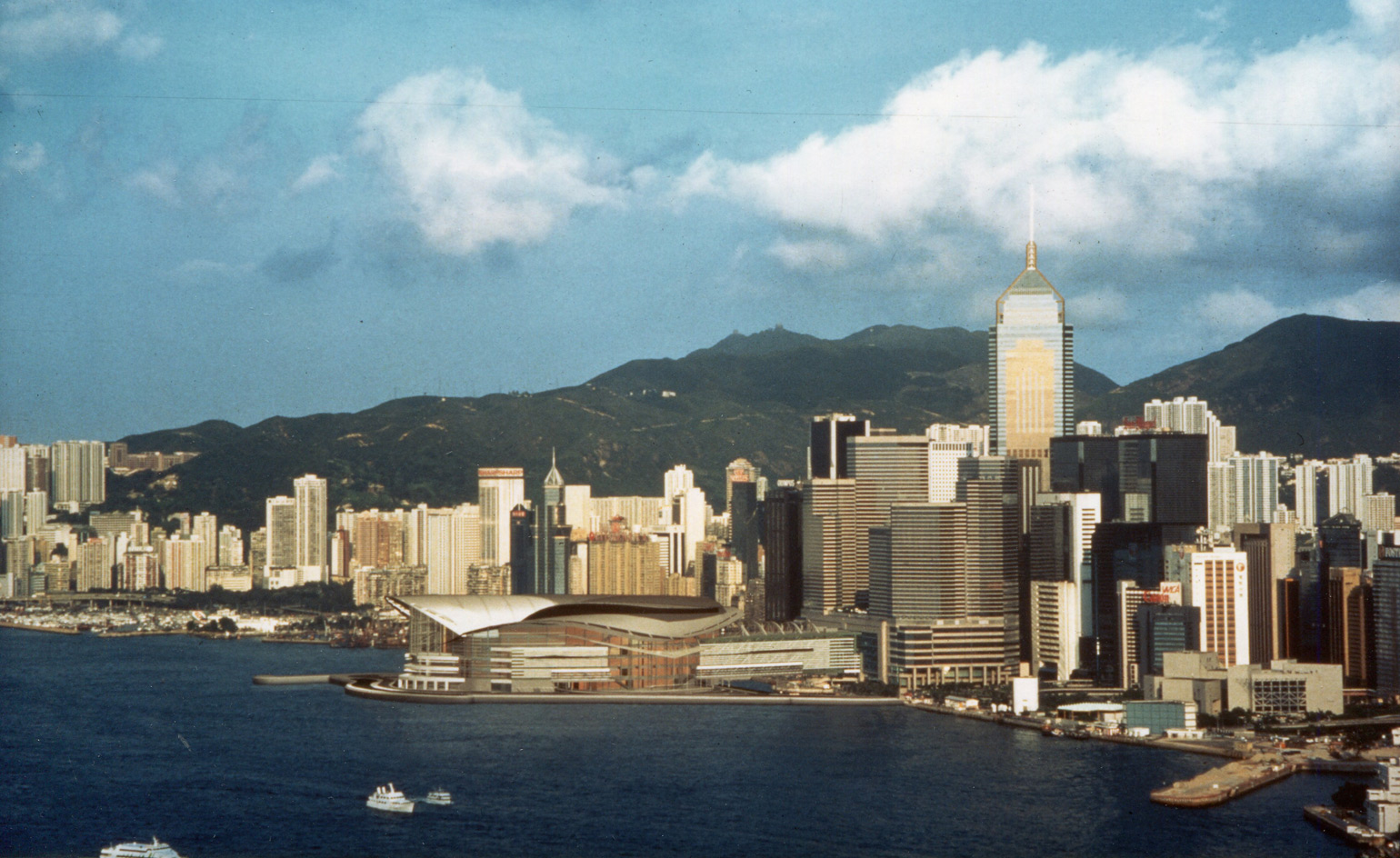
Tomorrow marks 20 years since the United Kingdom returned the sovereignty of Hong Kong to China. It’s an understatement to say that things have changed since 1 July 1997 – culturally, politically and architecturally. Set against a verdant backdrop of mountains and buoyed by Victoria Harbour, Hong Kong’s architectural fabric is unlike any other, boasting starchitect projects from the likes of Zaha Hadid, Norman Foster and more. As construction continues apace, we trace the city’s most remarkable buildings...
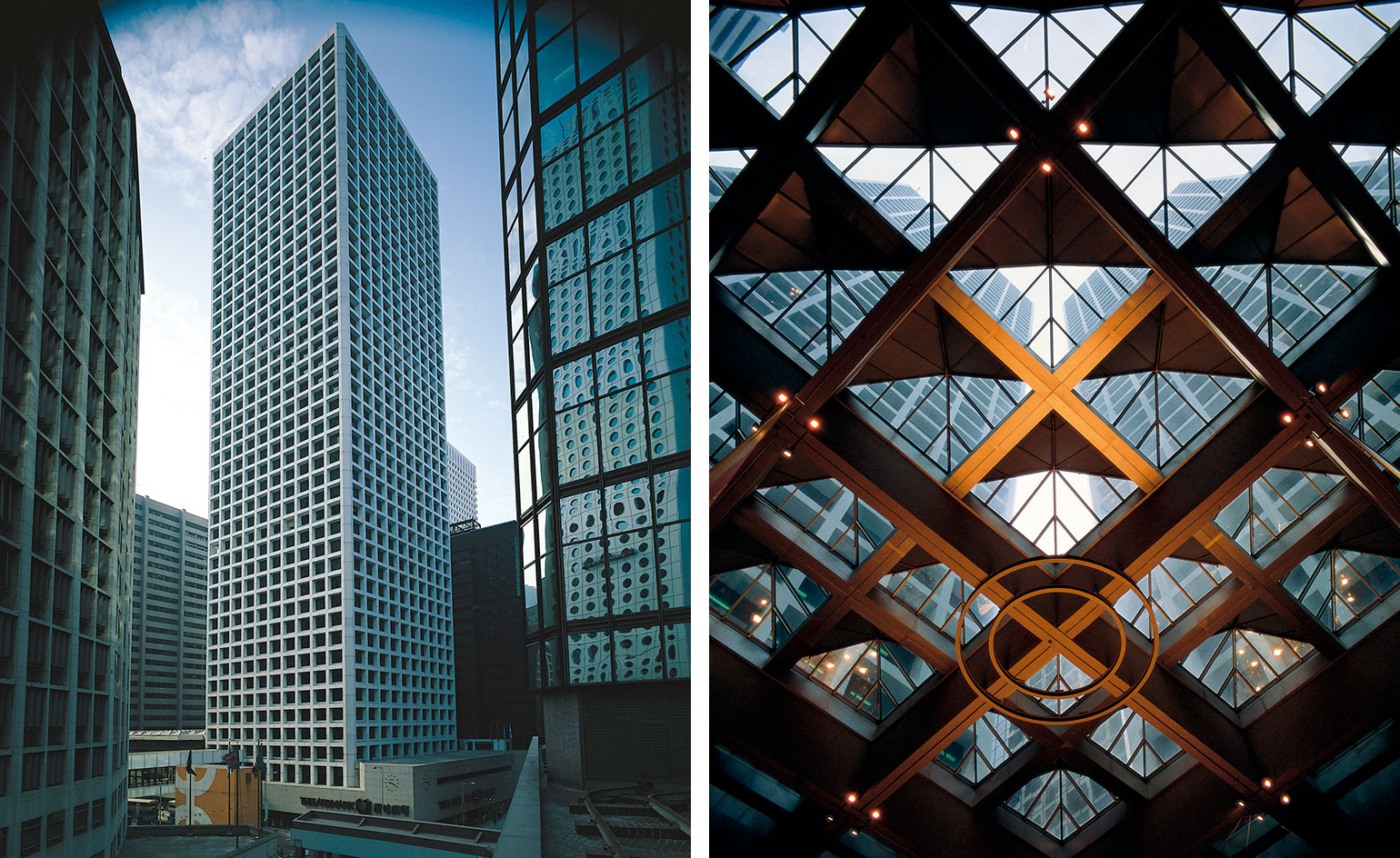
Building: The Landmark
Architect: P&T
Completed: 1983
Key features: Two square 44-storey, 140m towers, named the Gloucester and Edinburgh Towers, stand diagonally on the podium of Exchange Square, both featuring column-free office floors with deeply recessed windows. Each tower extends through the lower public areas, forming the edge of a large skylit atrium, with a tessellating roof structure
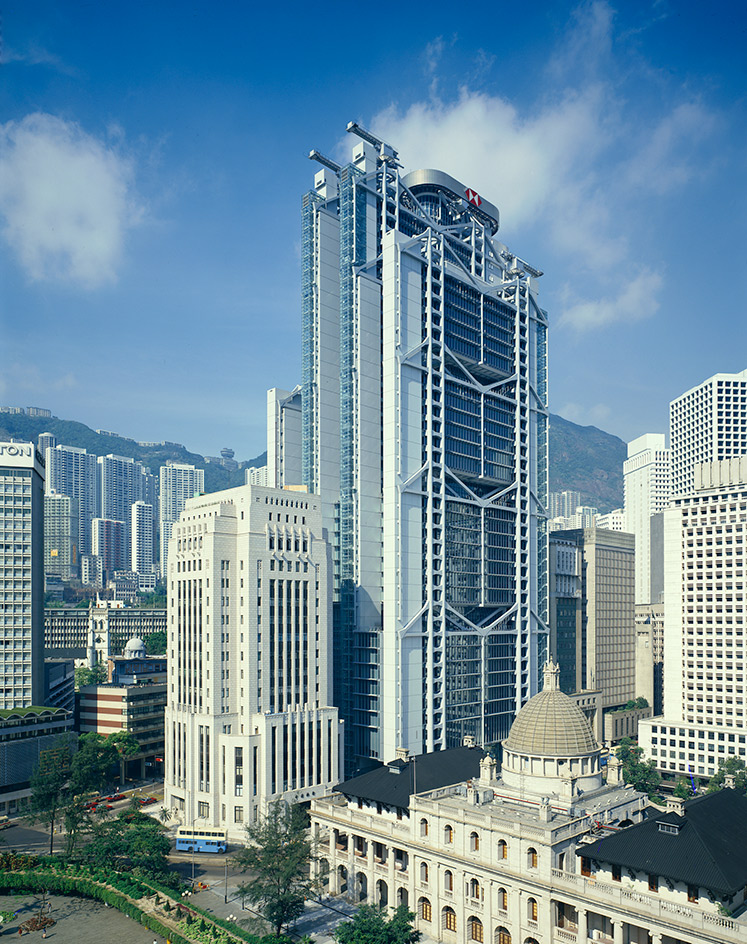
Building: HSBC Building (Hongkong and Shanghai Bank HQ)
Architect: Foster + Partners
Completed: 1985
Key features: Stepped profile of three individual towers, respectively 29, 36 and 44 storeys high, service cores located at the perimeter of the building, sheltered public plaza below, terraced gardens
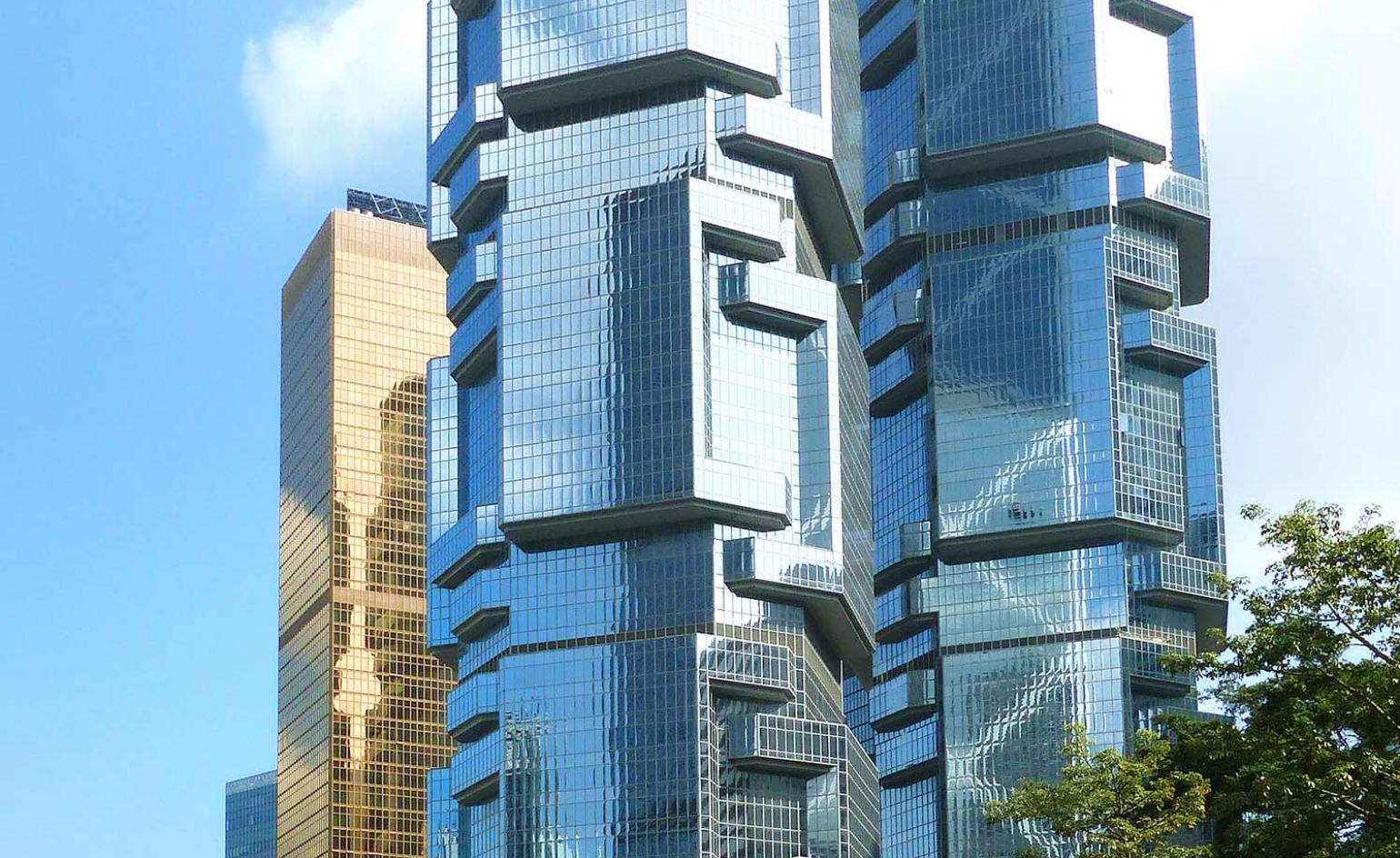
Building: Lippo Centre
Architect: Wong & Ouyang
Completed: 1988
Key features: Two office towers of 42 and 46 floors respectively with a commercial base, dark blue glass facade, the building can be accessed by pedestrians by elevated footbridges, sculptural design.
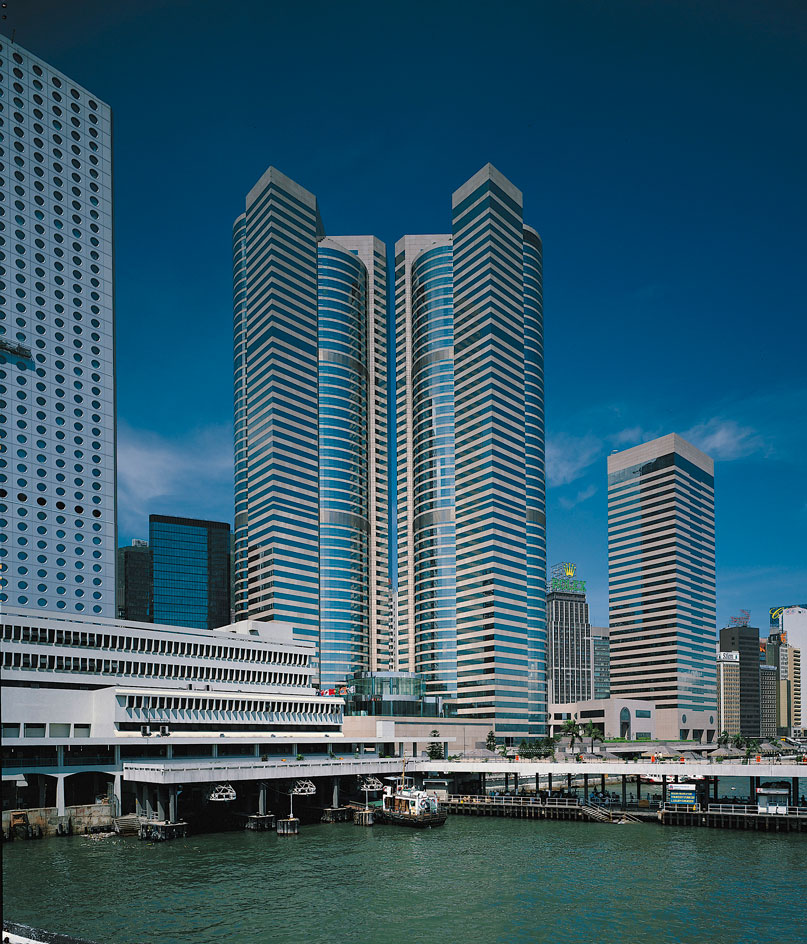
Building: Exchange Square
Architect: P&T
Completed: 1988
Key features: A complex consisting of a triad of towers, two 52-storey and one 32-story, all utilising an underlying geometric order of square and circular elements to achieve a distinct sculptural profile. It’s top floor features a stepped arrangement, whilst horizontal modular bands of silver reflective glass and pink Spanish granite provide an aesthetic outlook.
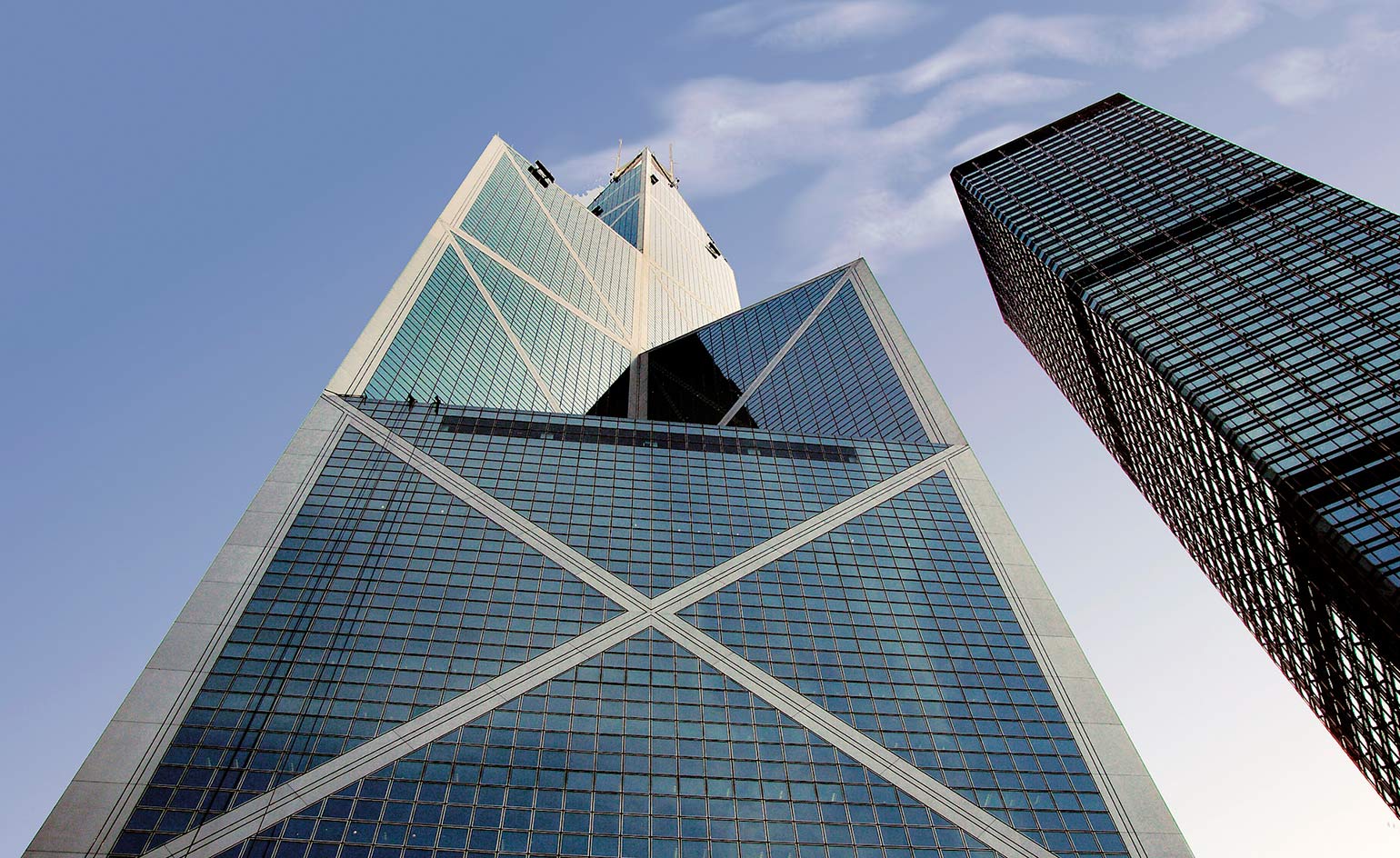
Building: Bank of China Tower
Architect: IM Pei & Partners
Completed: 1990
Key features: Held the title of tallest building outside of the US between 1990 and 1992, a duo of signature masts reach 367.4 m, vast glass-curtain walls.
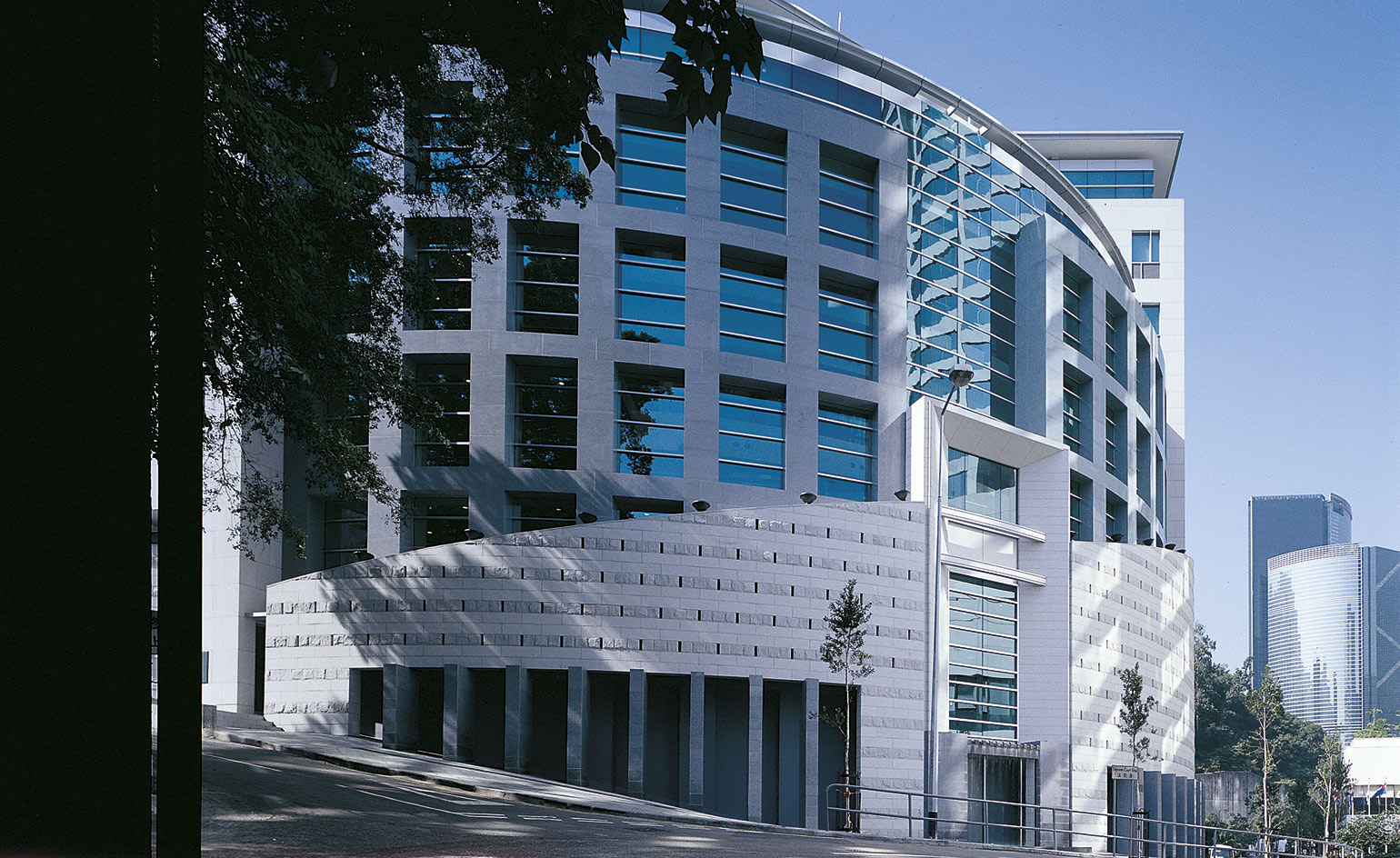
Building: British Consulate General
Architect: Farrells
Completed: 1996
Key features: Low-rise structure in keeping with the hillside setting, a constrast to the surrounding monolithic high-rises, granite, aluminium and glass cladding, structure of reinforced concrete, located in Hong Kong’s Mid-Levels area
Receive our daily digest of inspiration, escapism and design stories from around the world direct to your inbox.
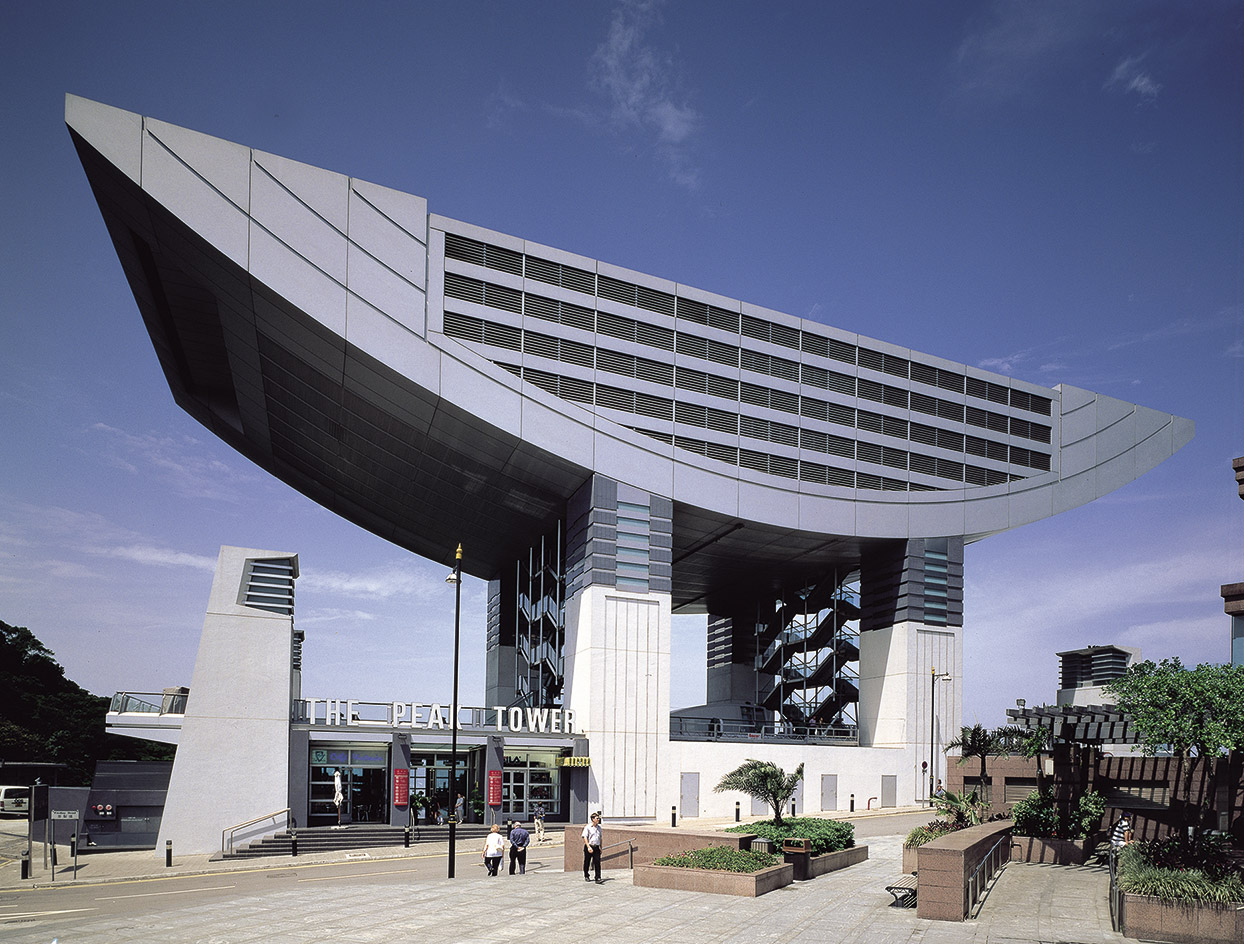
Building: Peak Tower
Architect: Farrells
Completed: 1997
Key Features: Crescent shape inspired by the valley landscape, solid base with upswept eaves references traditional Chinese architecture, structure of reinforced concrete with aluminium, glass and metal cladding, symbolic of the city and appears on the $20 bank note, one of Hong Kong’s most visited tourist destinations.
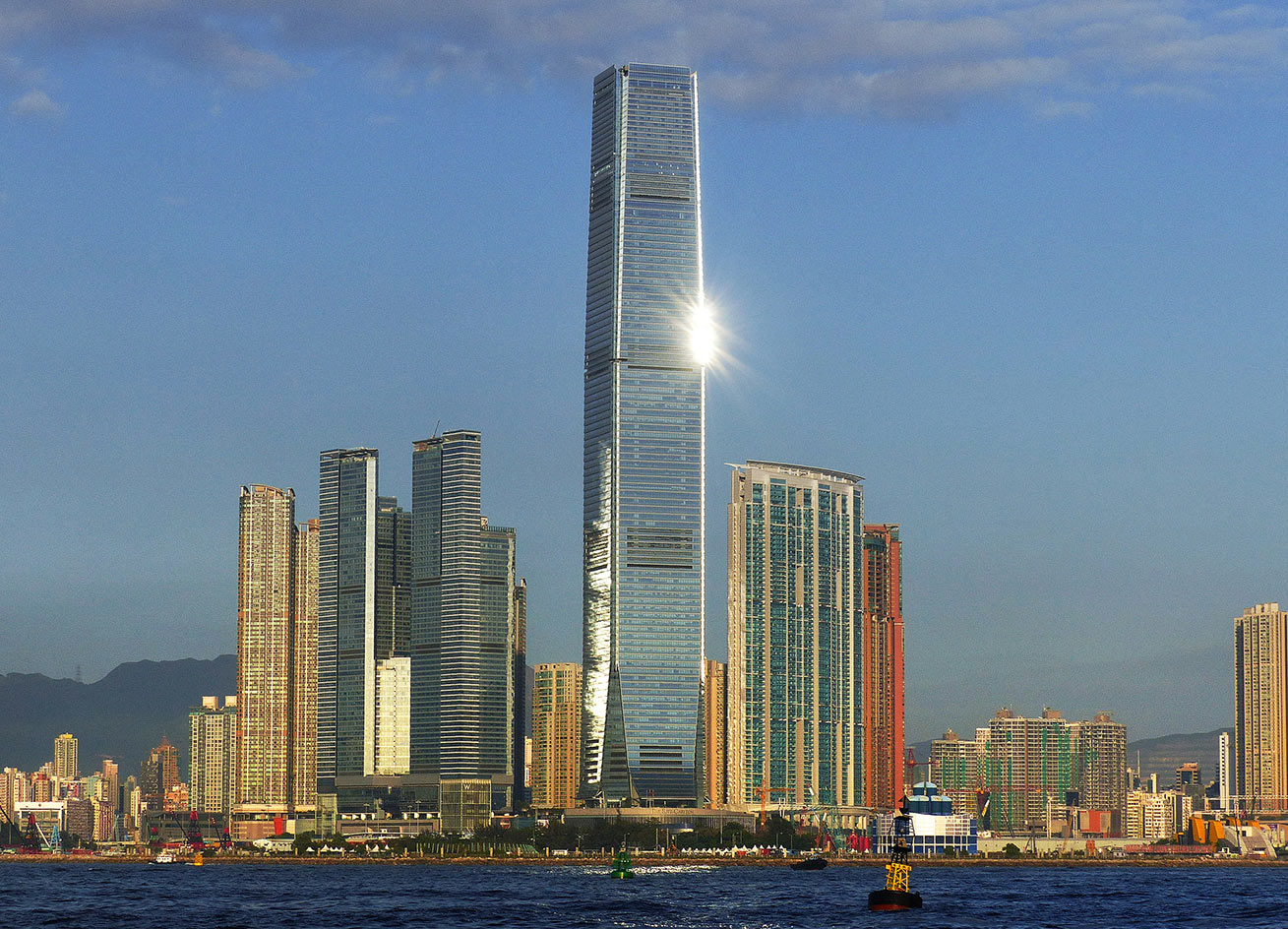
Building: International Commerce Centre (ICC)
Architect: Kohn Pedersen Fox
Completed: 2010
Key features: Structured around eight concrete mega-columns, around which a shingle style façade articulates a subtle, external curvature, sophisticated environmental control systems.
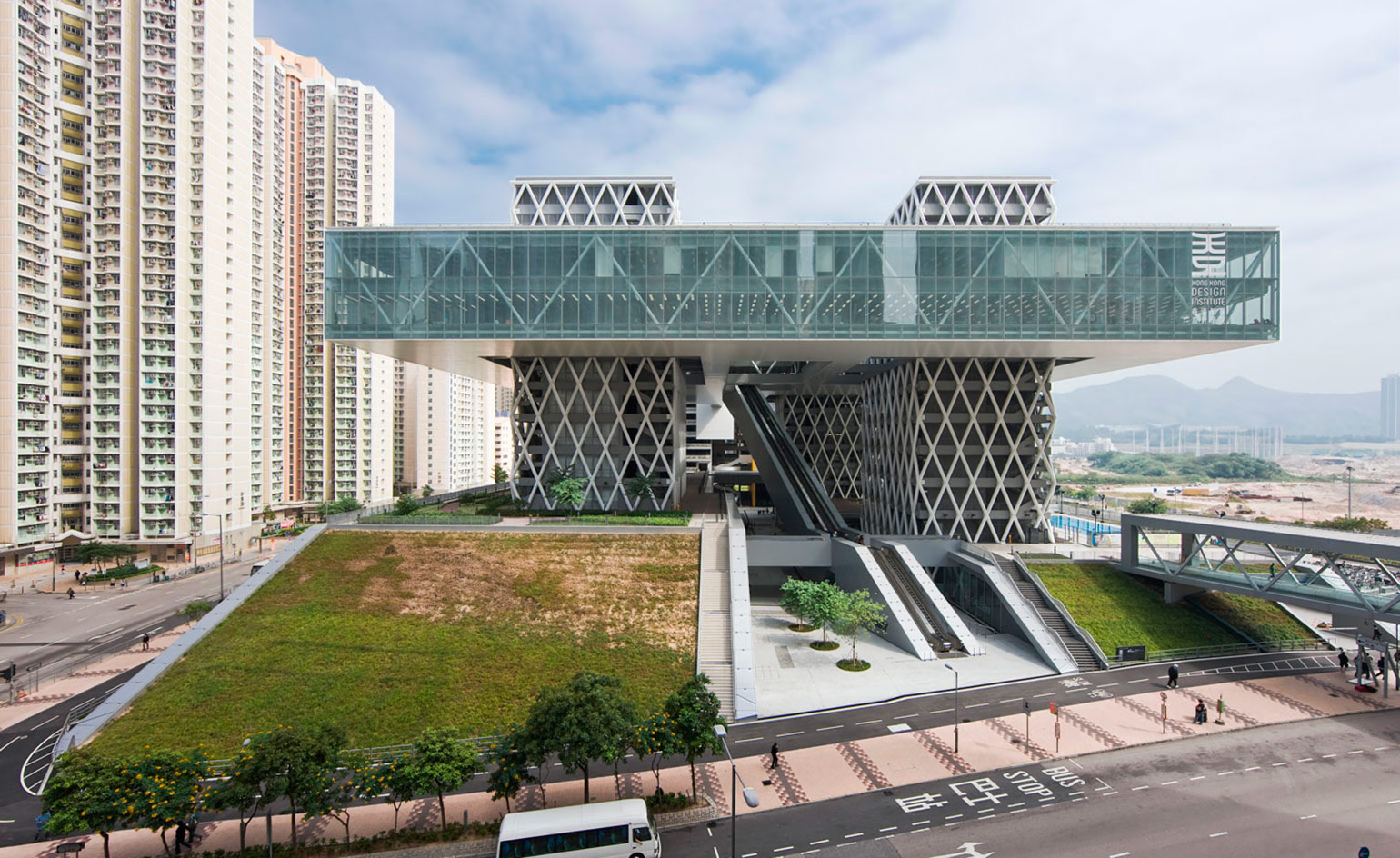
Building: Hong Kong Design Institute
Architect: Coldefy & Associates
Completed: 2011
Key features: The 100 sq m platform represents a ‘floating white sheet’ sitting 33m above ground level, supported by four towers and a diagrid structural system.
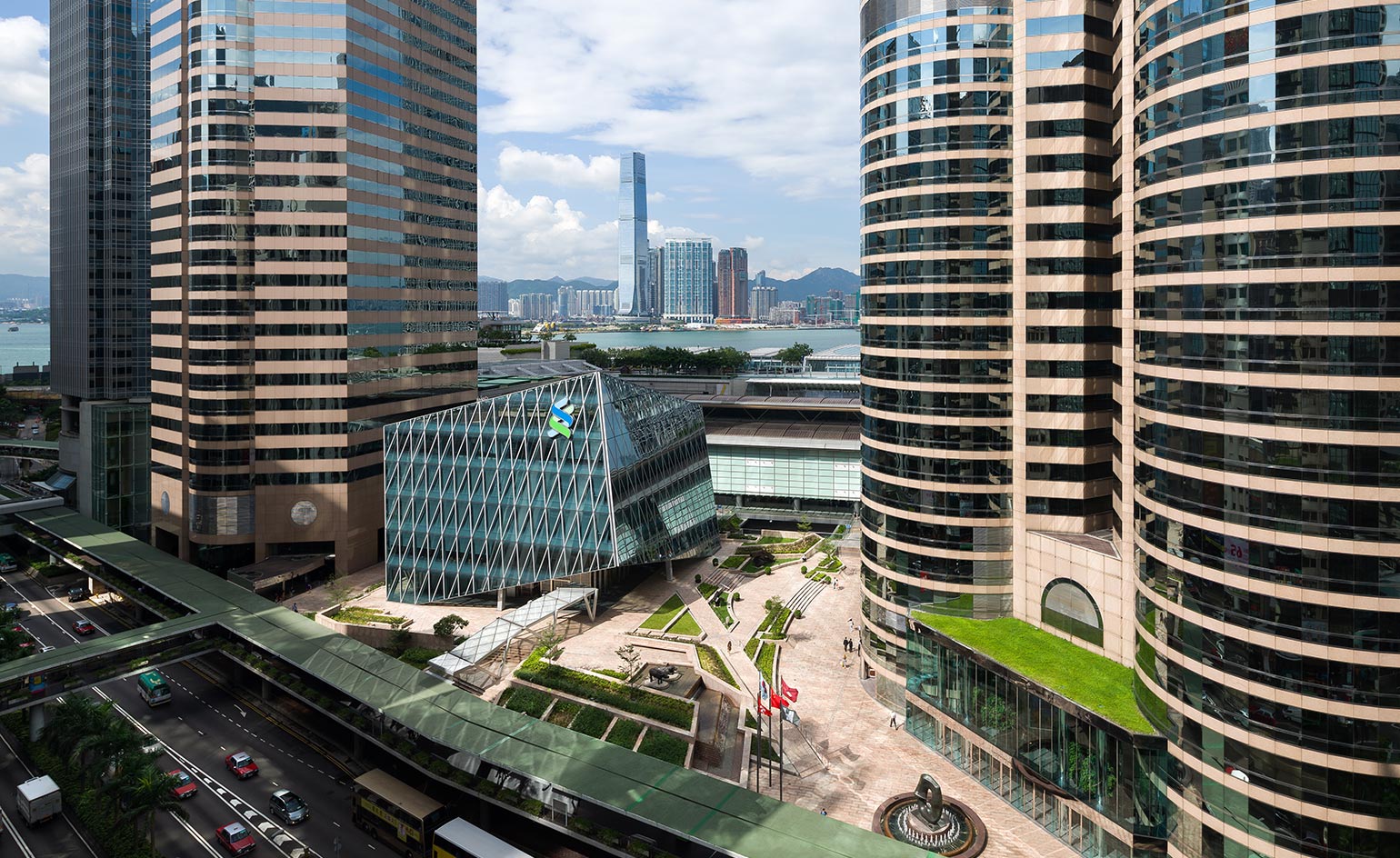
Building: The Forum
Architect: Aedas
Completed: 2014
Key features: Five storey office building, shaped like a cube titled 15.5 degrees off one corner, glass facades, located on the site of a bus station, a Henry Moore sculpture is located in the outdoor plaza.
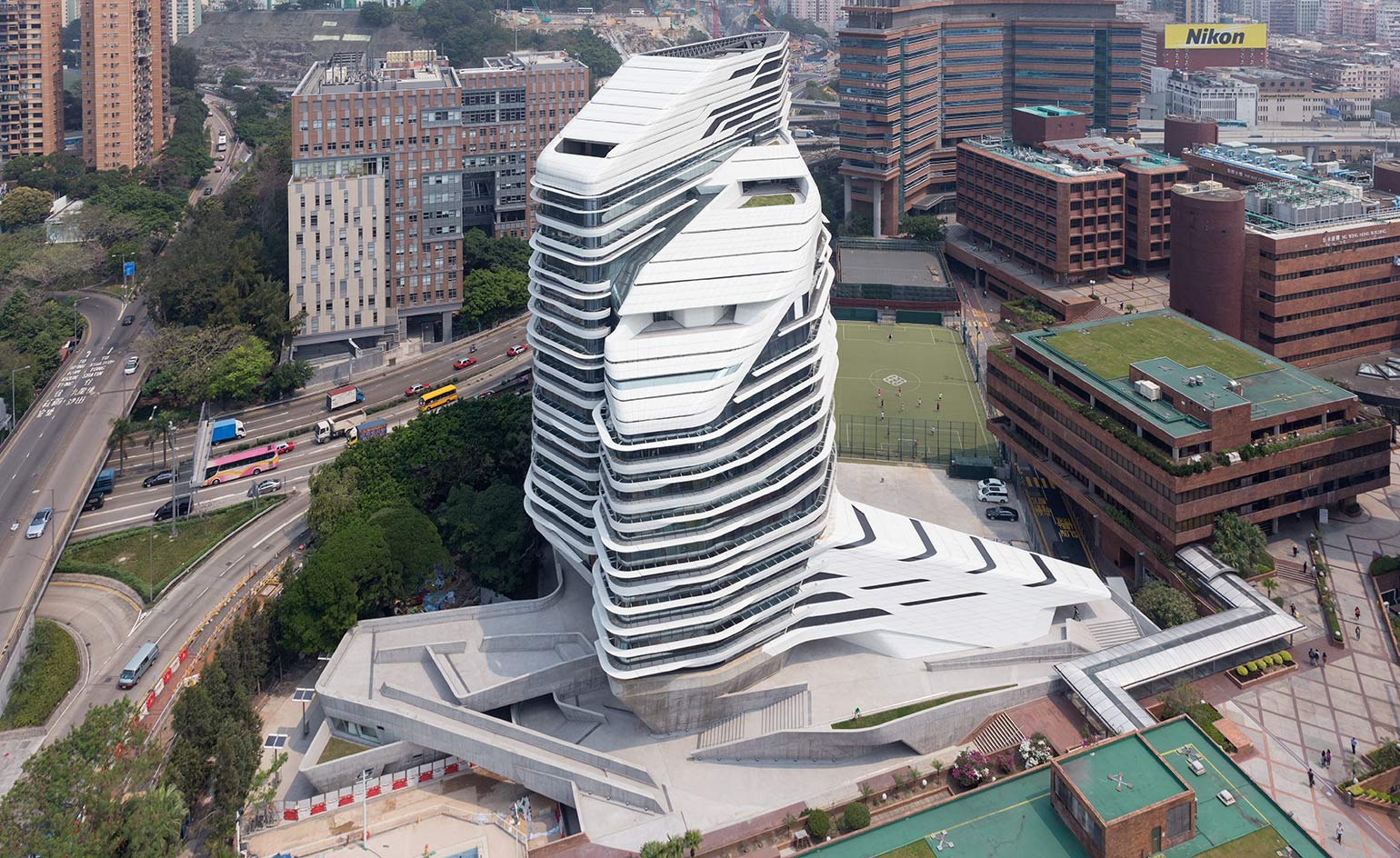
Building: Jockey Club Innovation Tower
Architect: Zaha Hadid Architects
Completed: 2014
Key features: 15-storey, 15,000 sq m tower, features fluid and connect volumes in constant dialogue with each other, including surrounding raised landscapes.
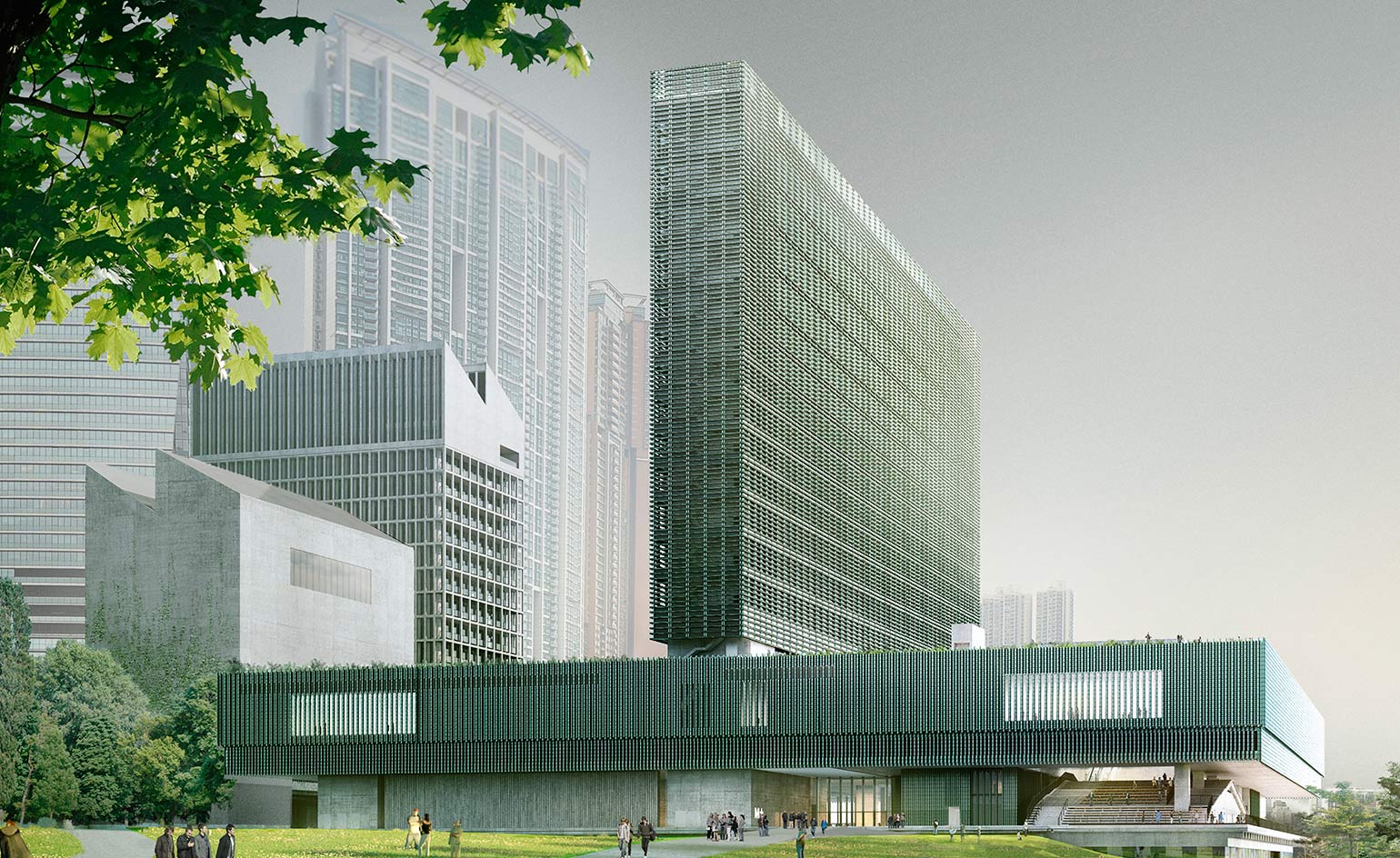
Building: M+ museum
Architect: Herzog & de Meuron and Farrells
Scheduled: 2019
Key features: Forward facing aspect, plans include large horizontal slabs perpendicular to the base platform, completed with a sky garden
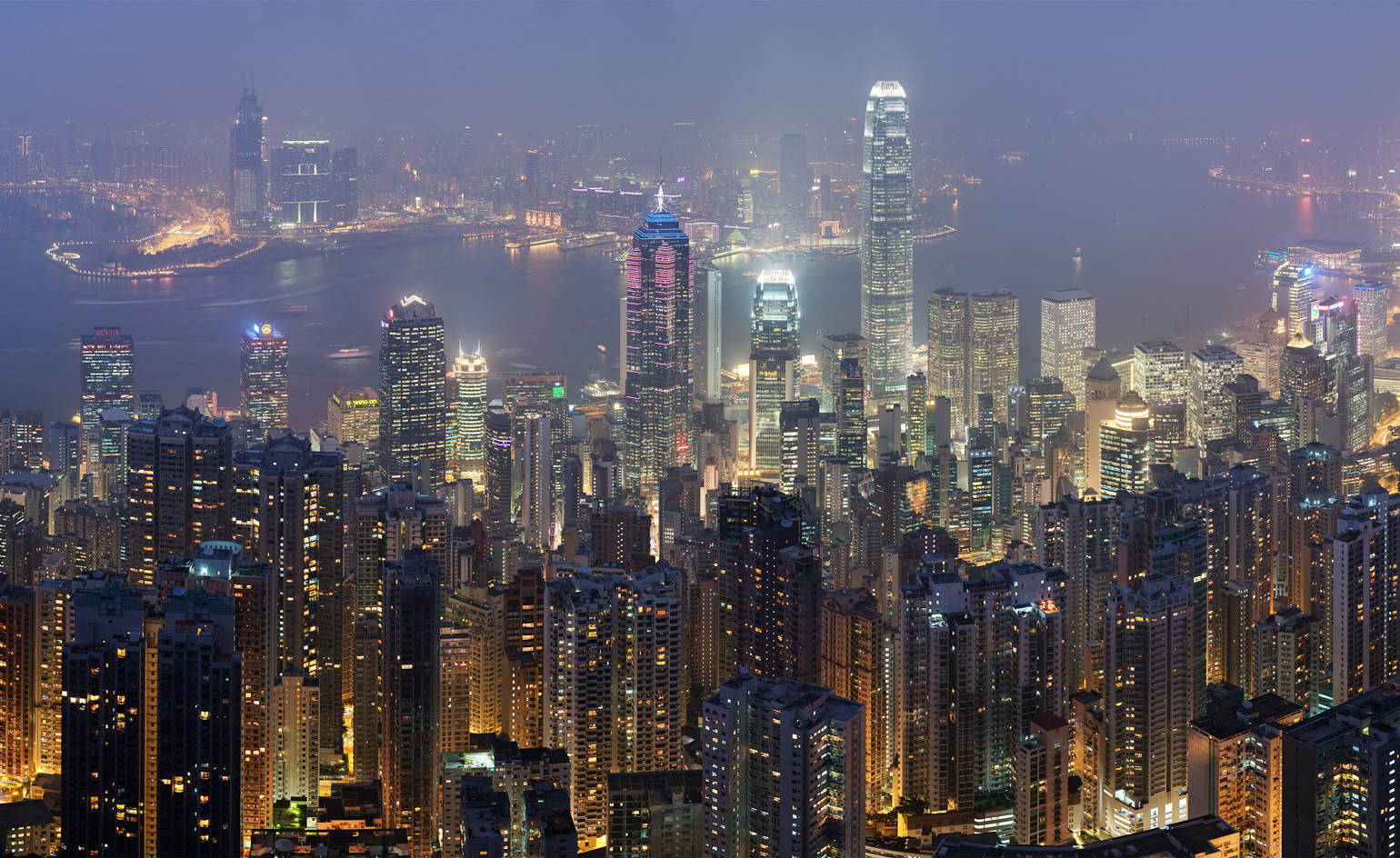
Hong Kong’s skyline has transformed dramatically over the past few decades. Today, it boasts more skyscrapers above 150m than any other city in the world. Major new projects taking shape include the West Kowloon terminus by Aedas, and the Hong Kong Science Park, set to firmly place the forward-thinking city on the technology and innovation map. Watch this space...
Ellie Stathaki is the Architecture & Environment Director at Wallpaper*. She trained as an architect at the Aristotle University of Thessaloniki in Greece and studied architectural history at the Bartlett in London. Now an established journalist, she has been a member of the Wallpaper* team since 2006, visiting buildings across the globe and interviewing leading architects such as Tadao Ando and Rem Koolhaas. Ellie has also taken part in judging panels, moderated events, curated shows and contributed in books, such as The Contemporary House (Thames & Hudson, 2018), Glenn Sestig Architecture Diary (2020) and House London (2022).
-
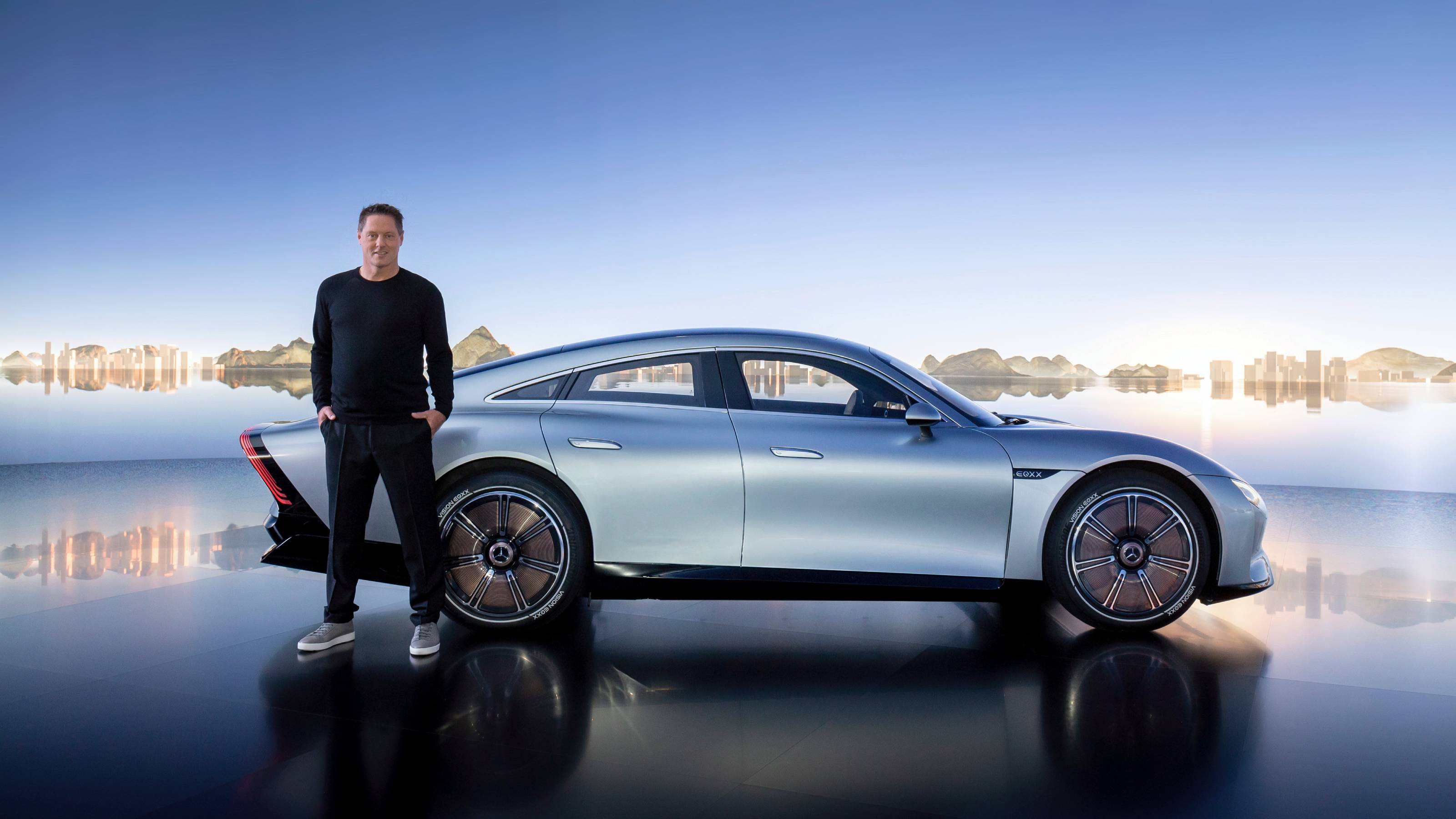 Gorden Wagener leaves the helm of Mercedes-Benz design after 28 years with the company
Gorden Wagener leaves the helm of Mercedes-Benz design after 28 years with the companyThe German designer is stepping down from the role of chief design officer at Mercedes-Benz. We look back at his influence and impact on the world of automotive and luxury design
-
 These Christmas cards sent by 20th-century architects tell their own stories
These Christmas cards sent by 20th-century architects tell their own storiesHandcrafted holiday greetings reveal the personal side of architecture and design legends such as Charles and Ray Eames, Frank Lloyd Wright and Ludwig Mies van der Rohe
-
 Lucila Safdie’s ‘feminine and surreal’ womenswear is inspired by teenage bedrooms and internet lore
Lucila Safdie’s ‘feminine and surreal’ womenswear is inspired by teenage bedrooms and internet loreThe latest in our Uprising series, the Central Saint Martins graduate is honing a pastel-shaded vision rooted in depictions of girlhood in film and literature
-
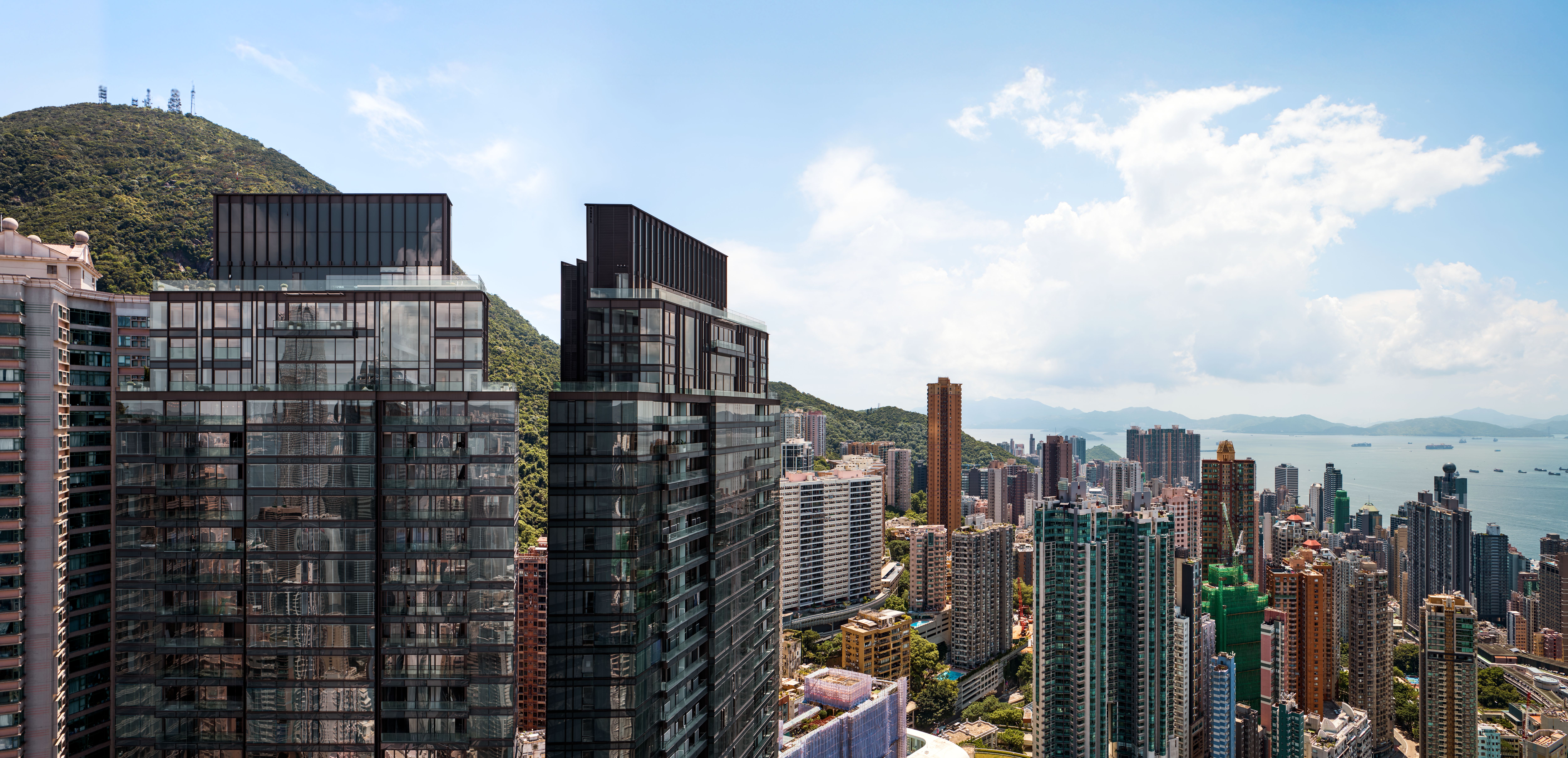 Discover The Legacy, Hong Kong’s eye-catching new condo
Discover The Legacy, Hong Kong’s eye-catching new condoThe Legacy, by ACPV Architects Antonio Citterio Patricia Viel, is a striking new condo tower that aims to ‘create a sense of community and solidarity among people’
-
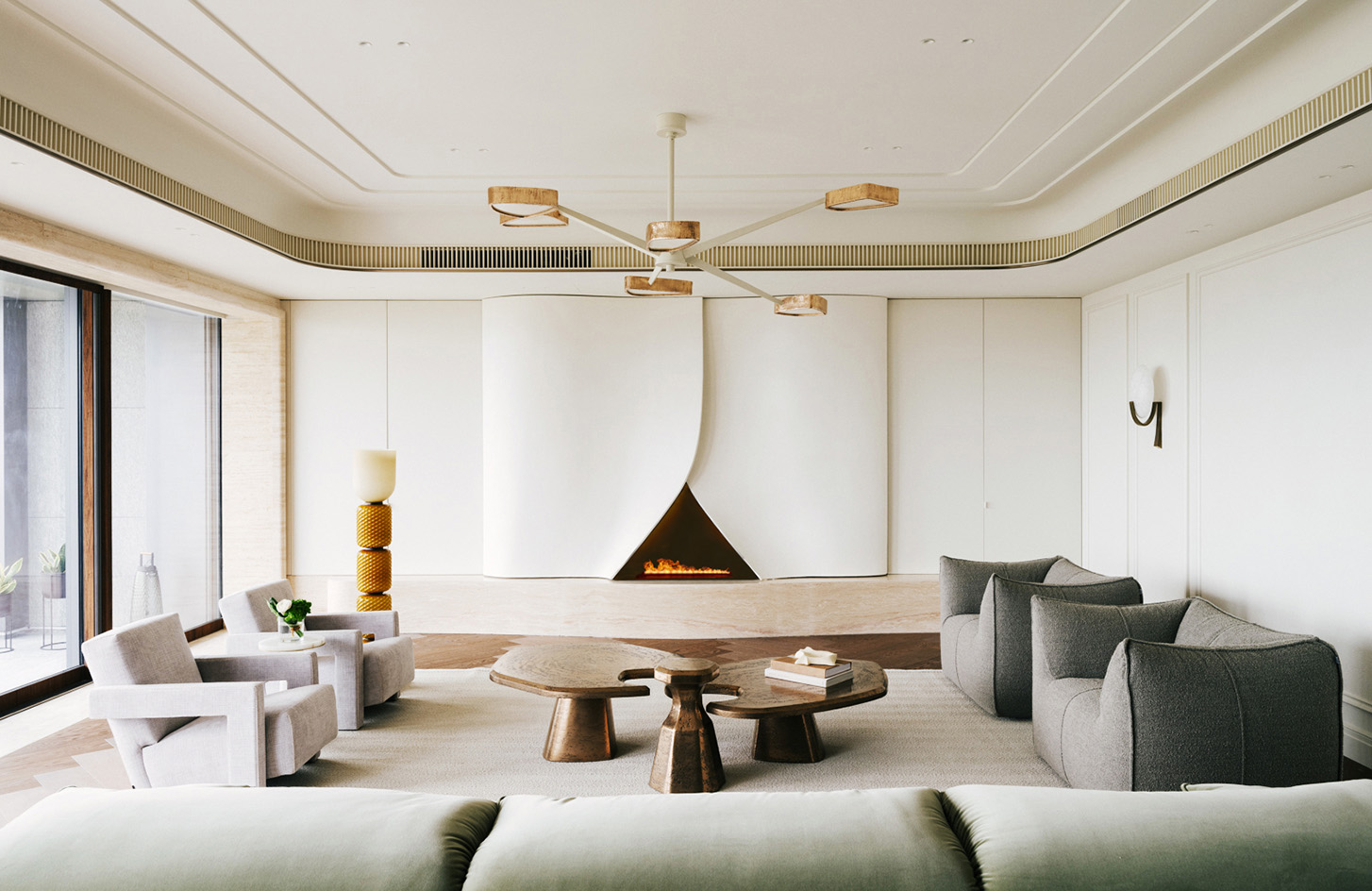 Tour Mountain Residence’s refined ‘interior landscape’ in Hong Kong
Tour Mountain Residence’s refined ‘interior landscape’ in Hong KongMountain Residence is a serene, multigenerational family home, nestled on Kowloon’s Mount Beacon in Hong Kong and designed by Nelson Chow
-
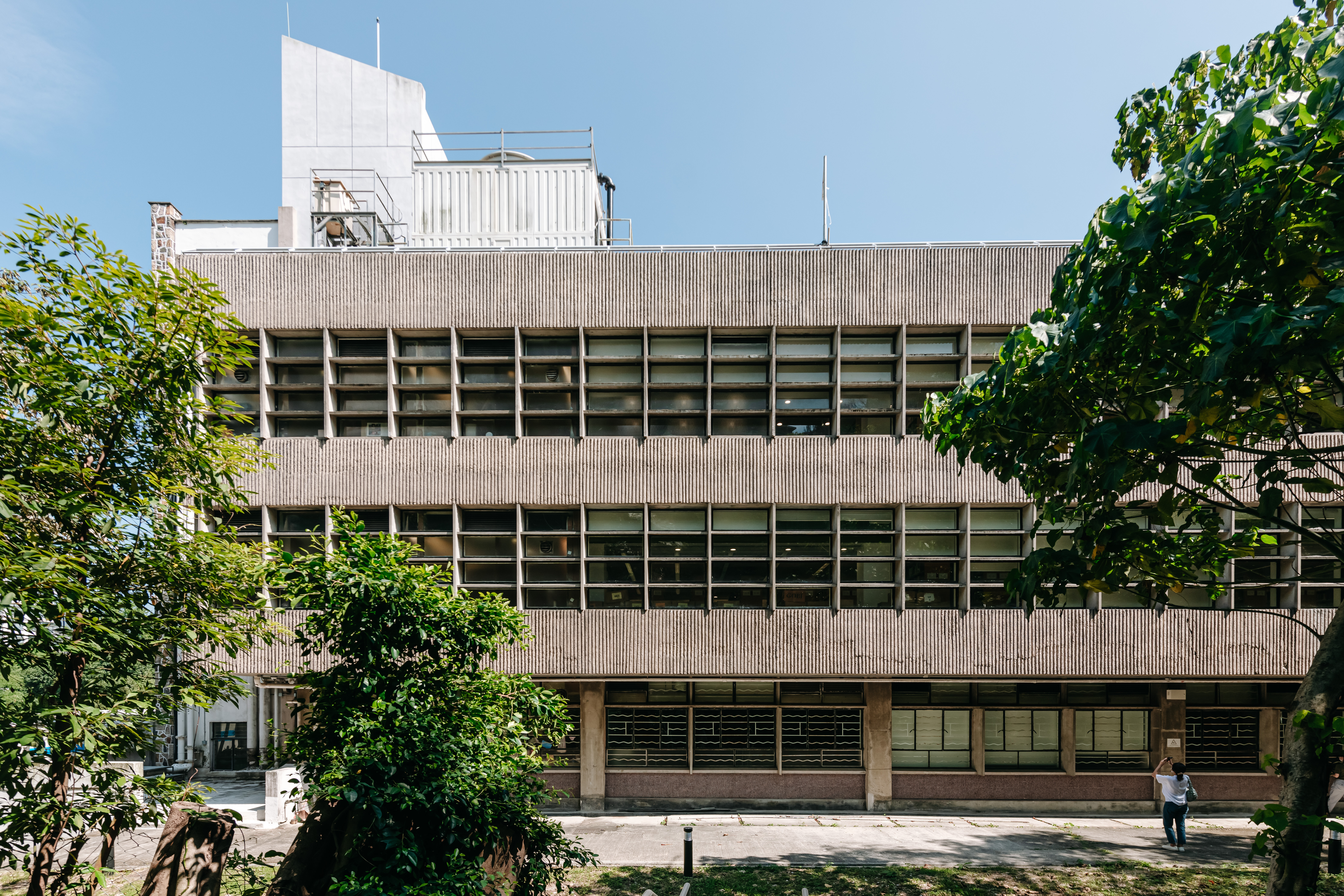 Hong Kong brutalism explored: tour the island with this new architectural map
Hong Kong brutalism explored: tour the island with this new architectural mapHong Kong brutalism is brought into sharp focus through the launch of Brutalist Hong Kong Map, the latest of its kind in publisher Blue Crow Media’s 20th-century architecture series
-
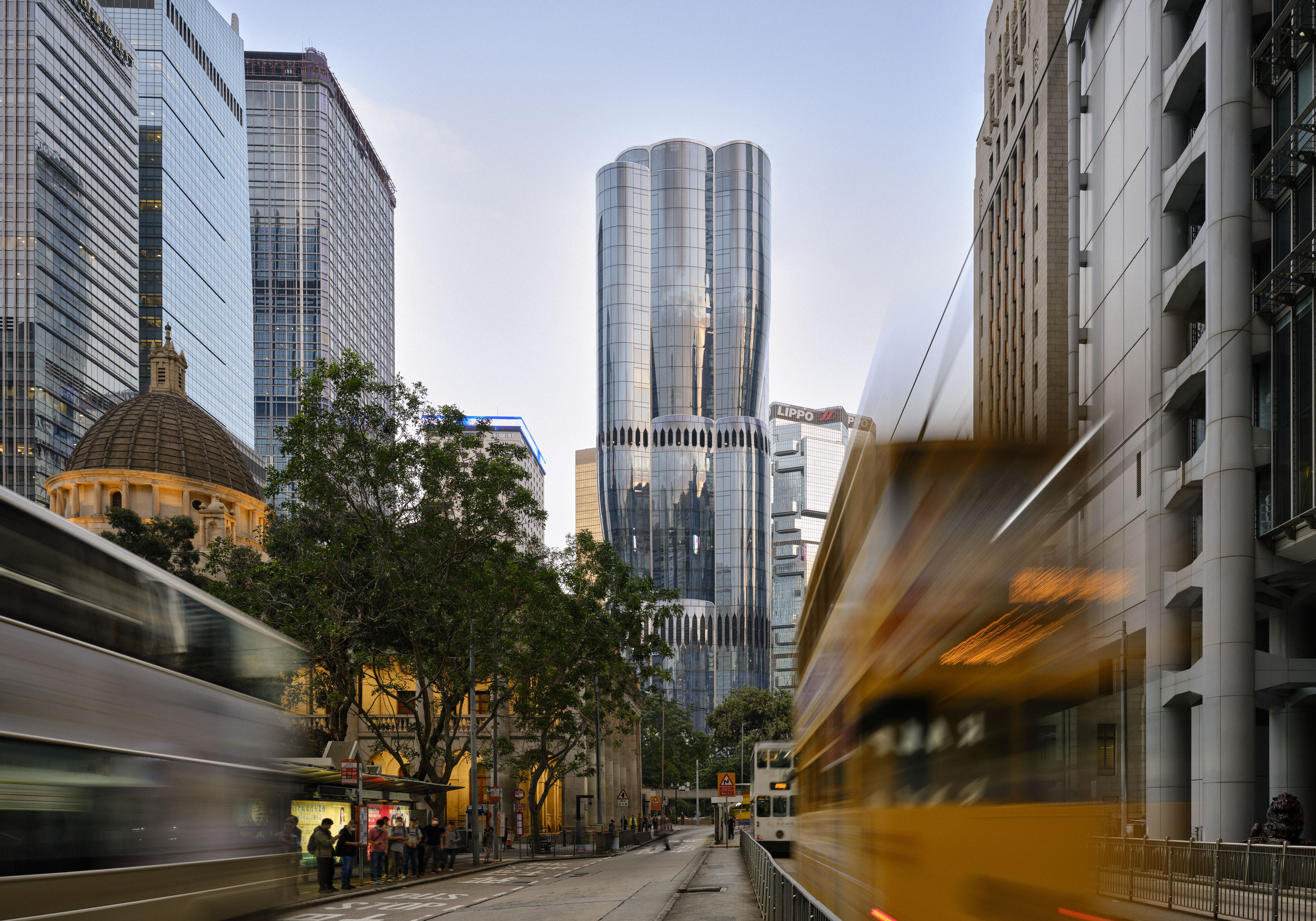 The Henderson by ZHA in Hong Kong makes everyone sit up and pay attention
The Henderson by ZHA in Hong Kong makes everyone sit up and pay attentionThe Henderson, ZHA's new high-rise in Hong Kong, stands out in its coveted address through its unusual, fluted façade of glass columns
-
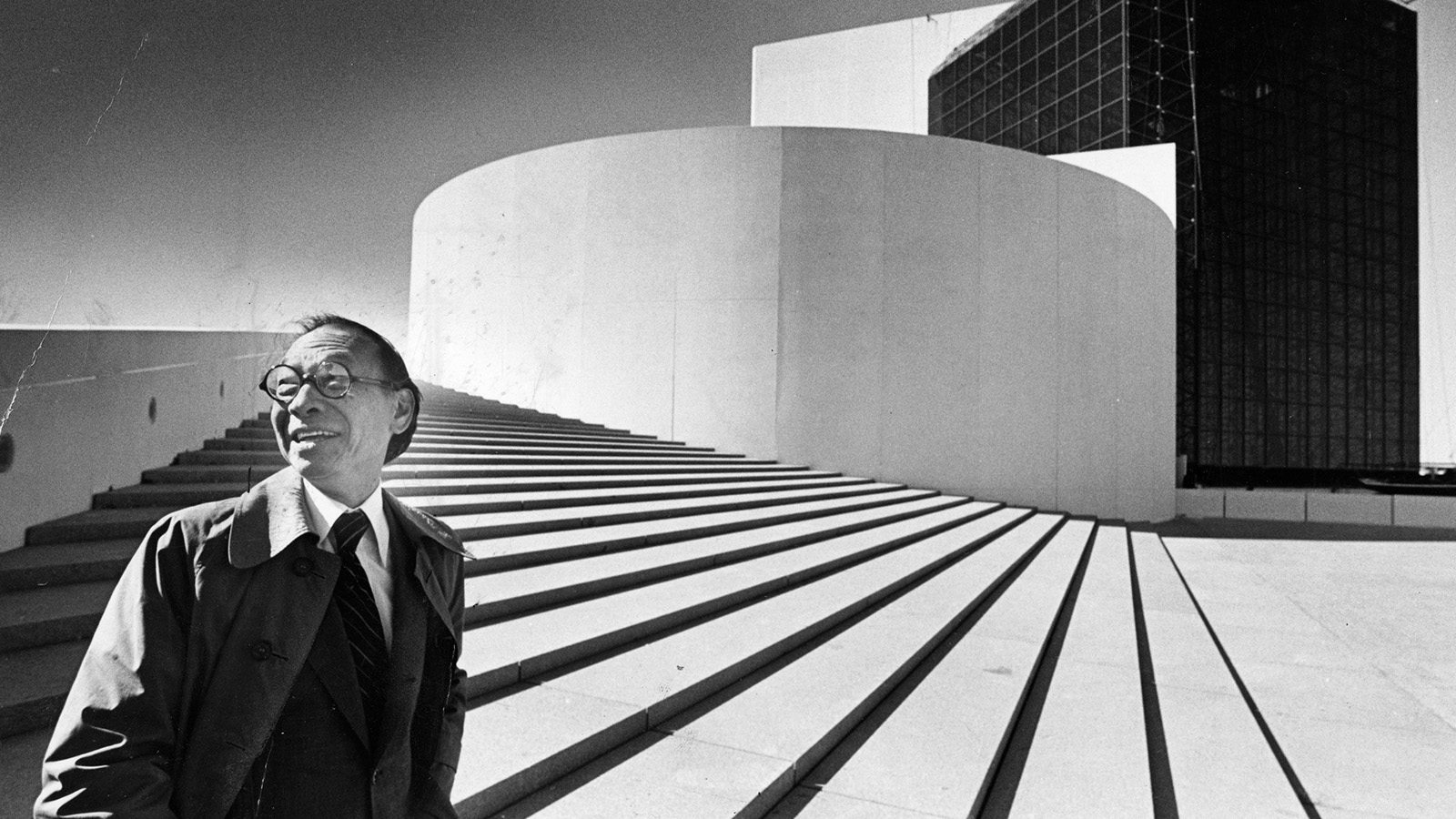 'Famous but understudied': IM Pei exhibition at M+ in Hong Kong is a deep dive into the architect's legacy
'Famous but understudied': IM Pei exhibition at M+ in Hong Kong is a deep dive into the architect's legacy'IM Pei: Life is Architecture' is an exhibition celebrating the global icon; and it's just opened at M+ in Hong Kong
-
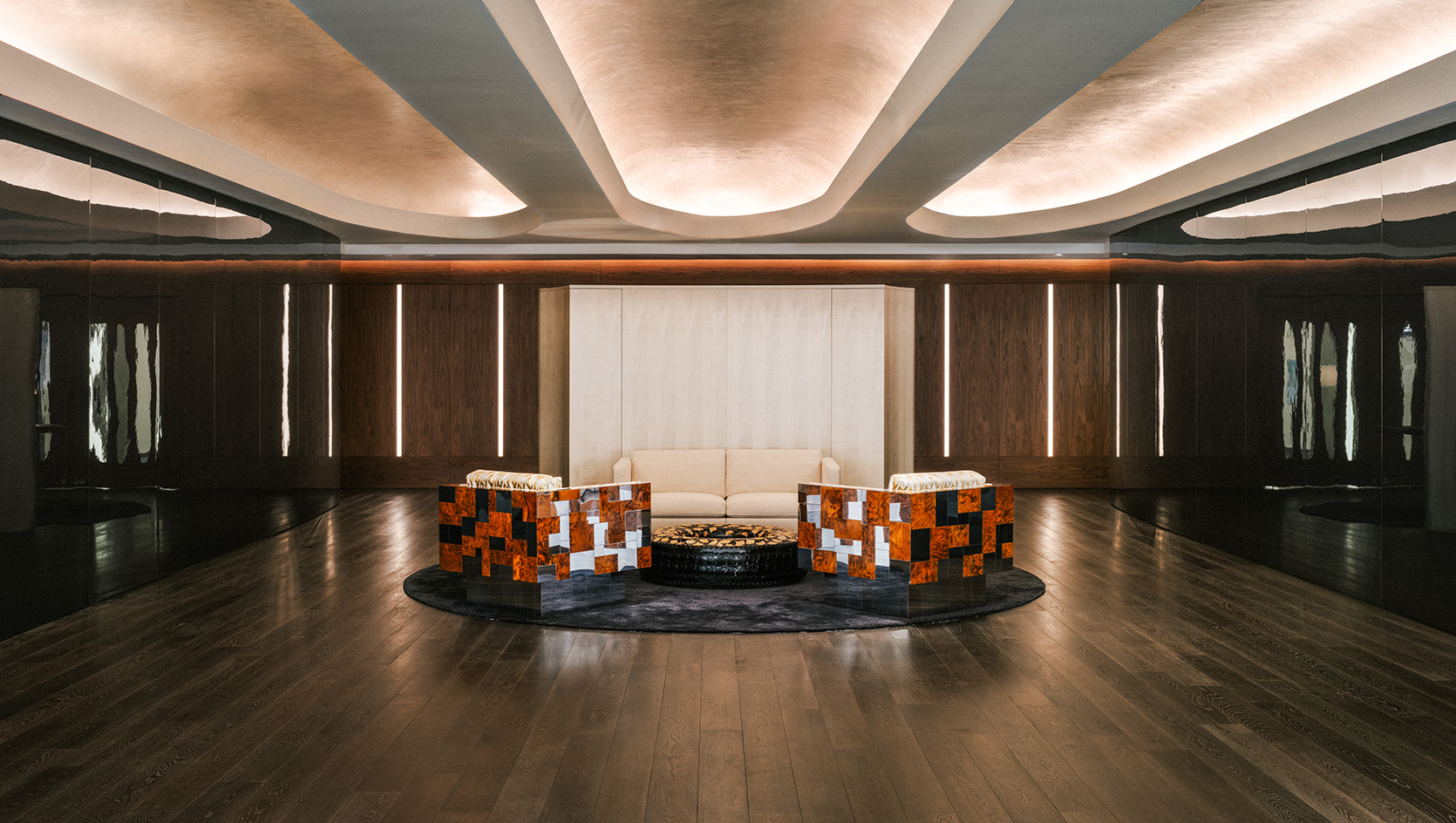 A Hong Kong HQ by Brewin Design Office draws on its modernist building’s nature
A Hong Kong HQ by Brewin Design Office draws on its modernist building’s natureA modernist-inspired office interior in Hong Kong by Brewin Design Office draws on its building’s 1980s Harry Siedler architecture
-
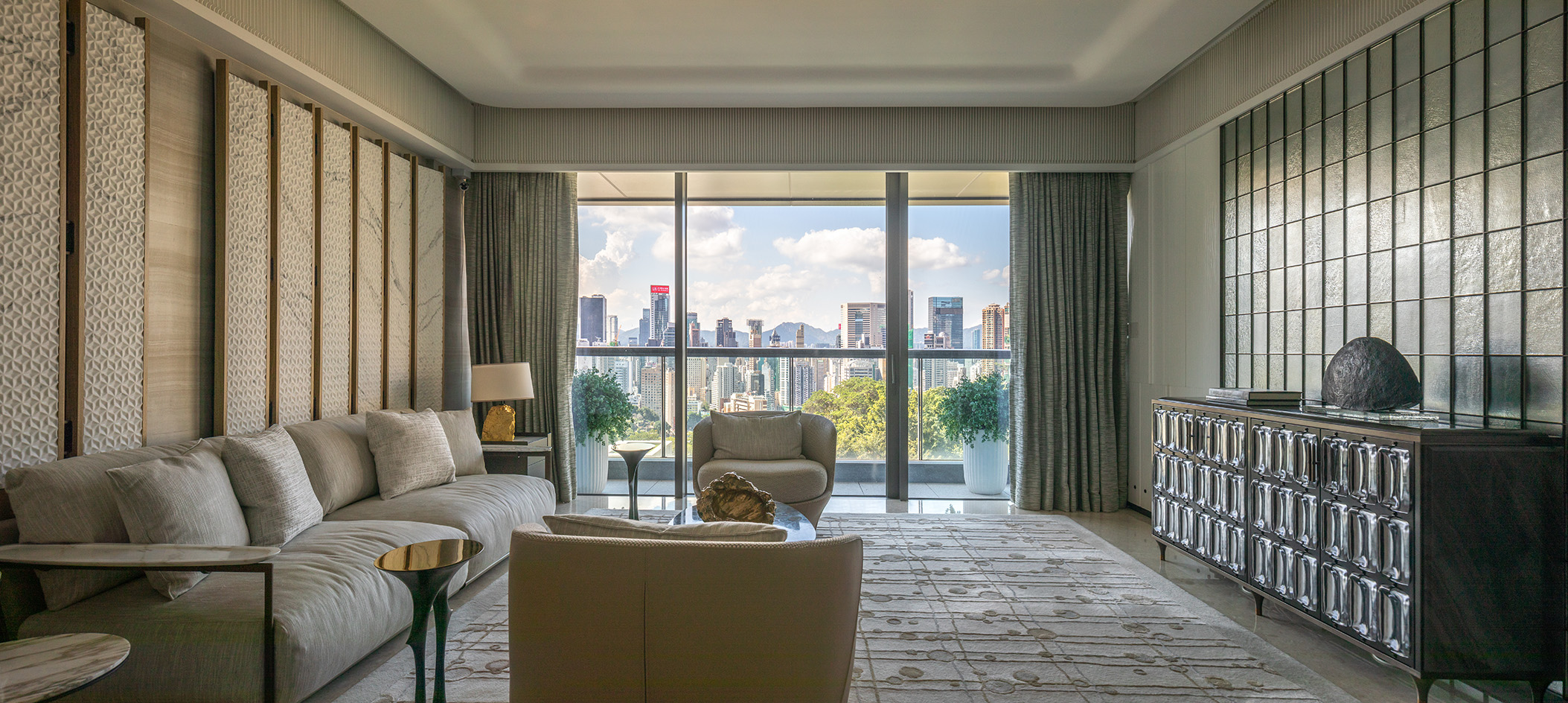 La Maison Blanche is a Hong Kong apartment elevated through bespoke luxury interiors
La Maison Blanche is a Hong Kong apartment elevated through bespoke luxury interiorsLa Maison Blanche by Cream is a Hong Kong apartment with an emphasis on period-inspired, layered decor and long city views
-
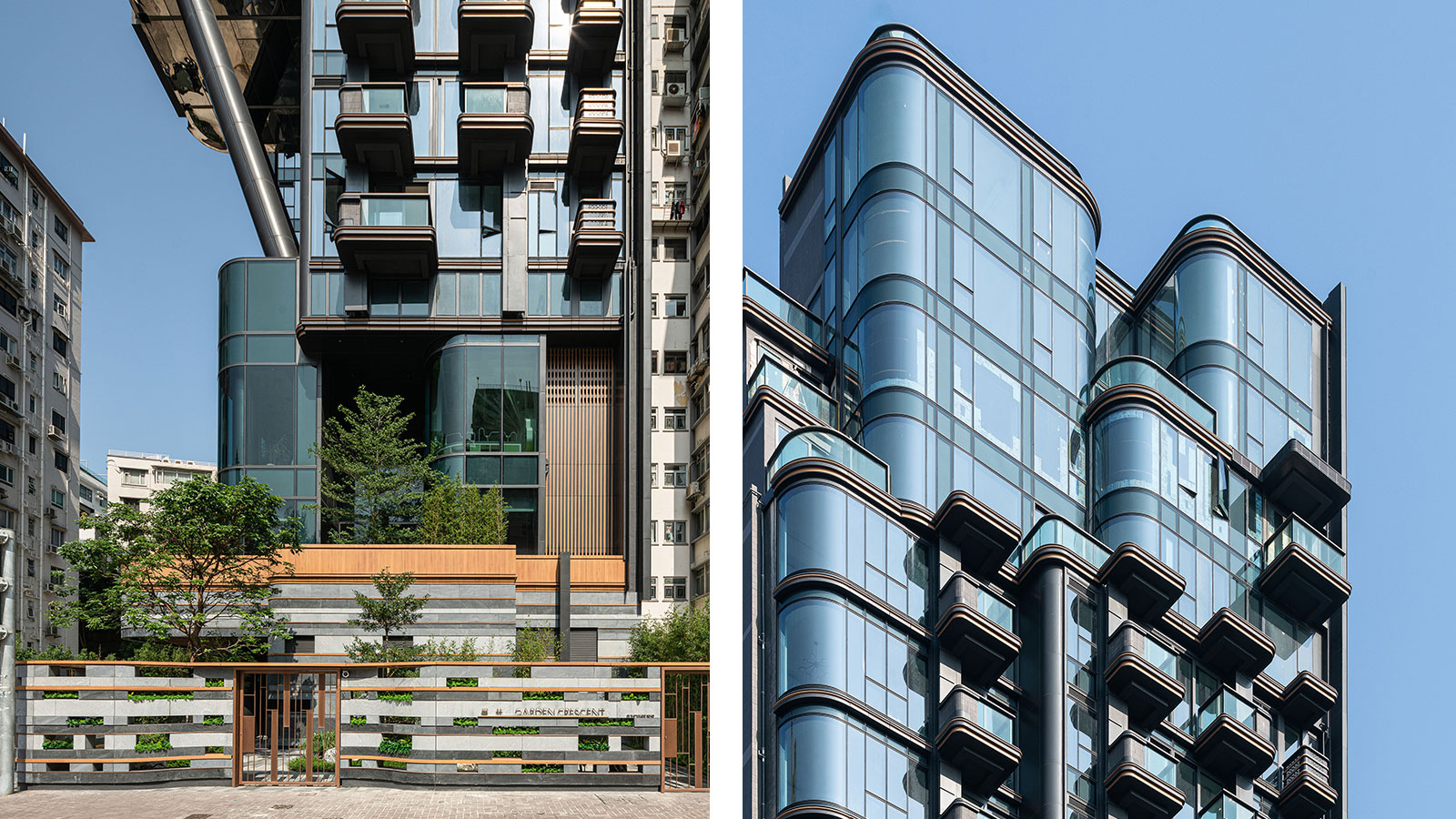 Garden Crescent brings biophilic design to a dense Hong Kong neighbourhood
Garden Crescent brings biophilic design to a dense Hong Kong neighbourhoodGarden Crescent by Ronald Lu & Partners brings a haven of green in its high-density Hong Kong neighbourhood